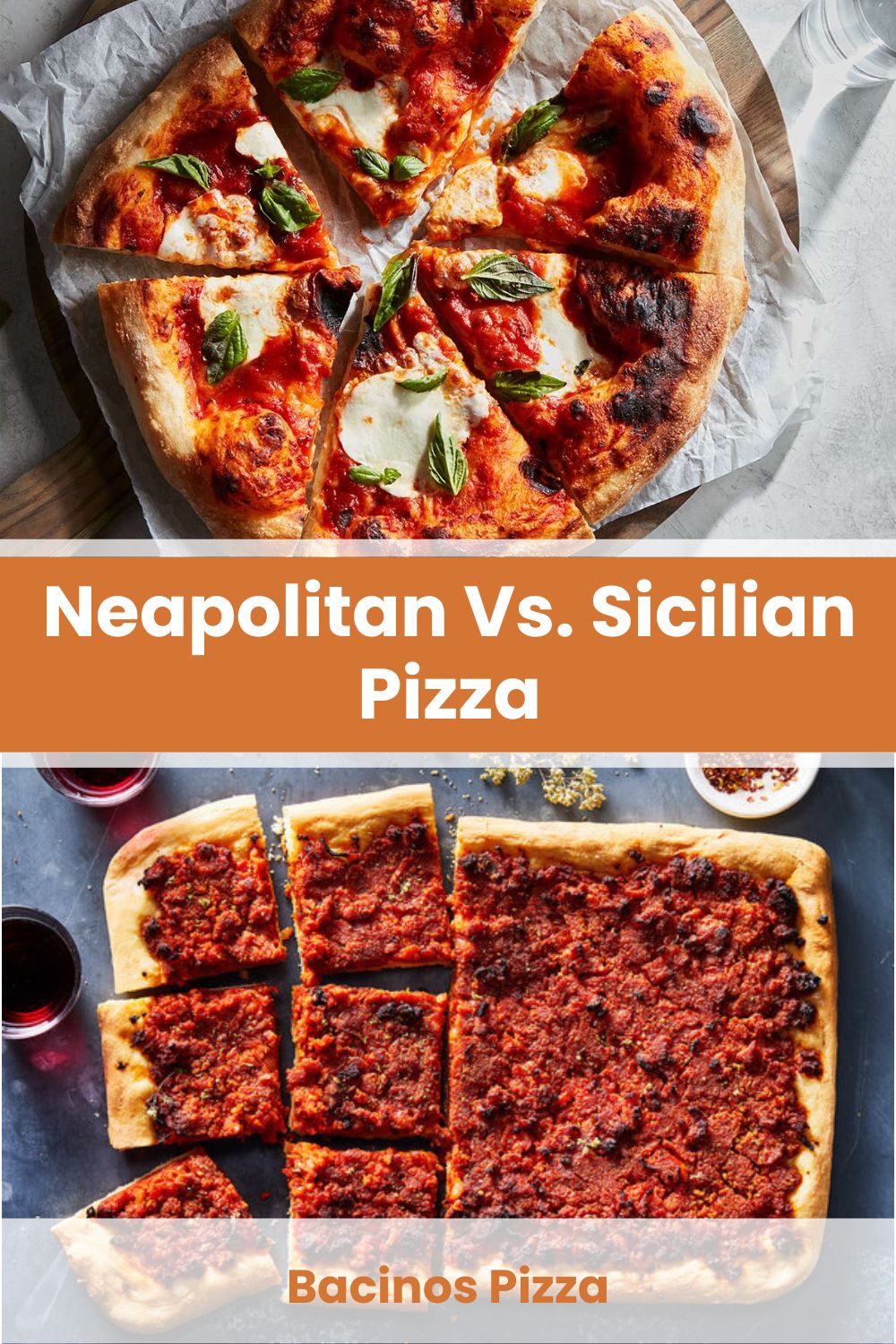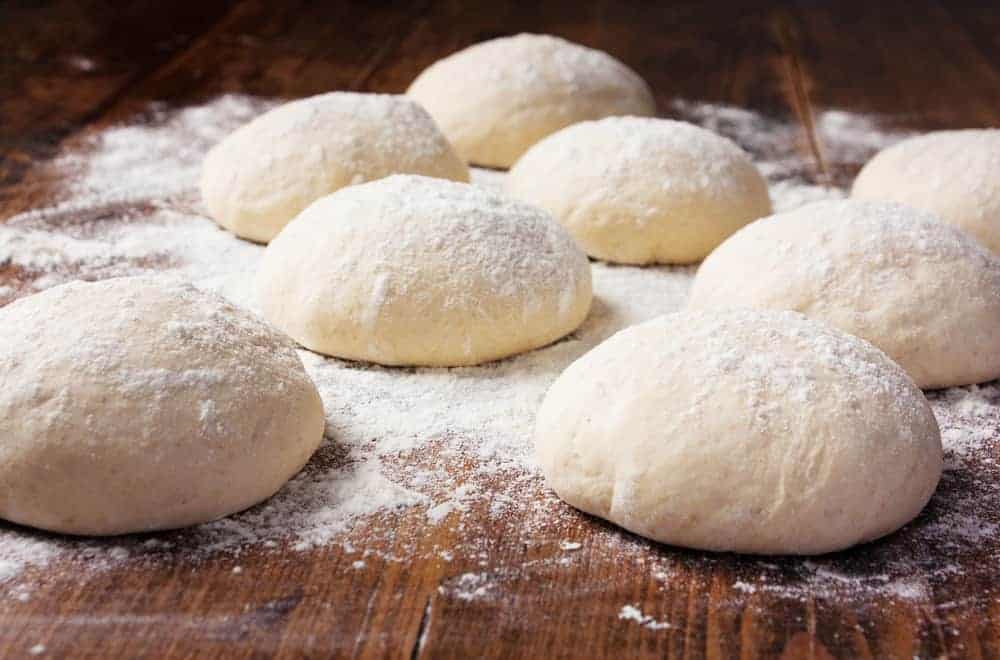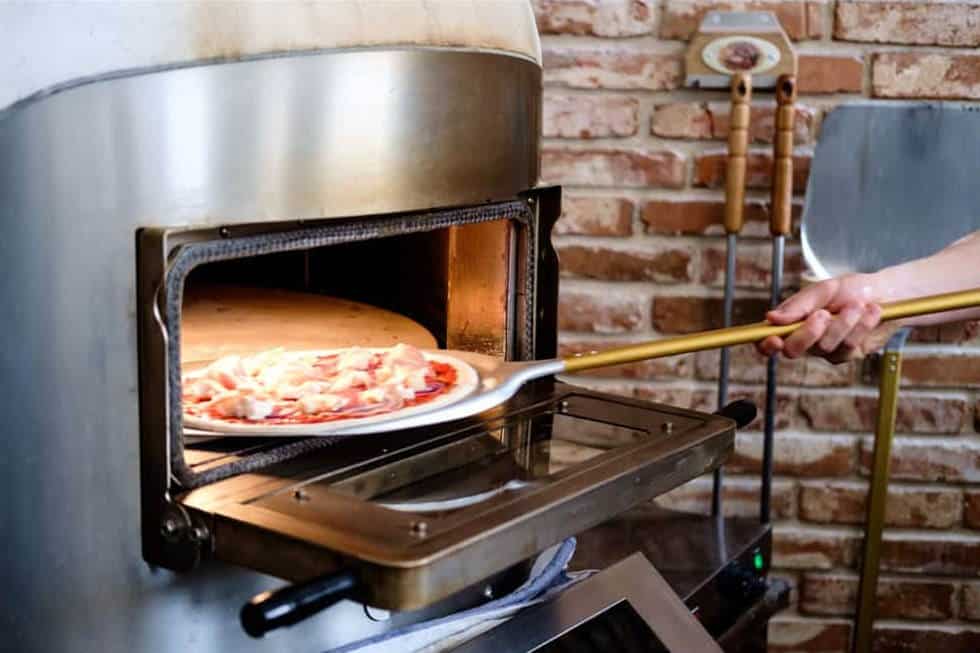Red sauce, check! Fresh herbs, check! Creamy cheese, double-check! While every variety of pizza has all these components, each has its unique characteristics that make it distinct. Among which is the two great styles that emerged from Italy: Neapolitan and Sicilian pizza.

If you’re wondering what makes these two different (aside from their crust), then you’ve come to the right page. Here, we will share its unique characteristics, from the raw ingredients to cooking methods.
What is Neapolitan Pizza?

Neapolitan pizza, also called pizza Napoletana, sprung from the land of Naples, Italy. It holds the simplest form, making up only the basics and freshest pizza ingredients. That means raw tomatoes, cheese, olive oil, and basil (without additional toppings).
Today, you’ll find three variants of Neapolitan pizza:
- Pizza Margherita: toppings include tomato, fresh mozzarella, basil, and olive oil.
- Pizza Margherita Extra: toppings are the same as pizza Margherita. But it also includes added mozzarella di Bufala.
- Pizza Marinara: toppings include tomato, garlic, oregano, and olive oil.
The Origin of Neapolitan Pizza
Flatbread — topped with olive oil, sea salt, and chopped garlic — was famous among the neighborhoods of Naples. It was a delicious dish but lacked the defining characteristic of a pizza: the tomatoes.
Tomatoes weren’t widely accepted in Europe until the 16th century because they were considered poisonous. The acidity of tomatoes leached lead from pewter plates, leading to lead poisoning among the wealthier classes.
But it all changed in the 18th century when Italian peasants added tomatoes to their flatbread. The prototype began to flourish. And word went out to city dwellers flocking to the hometown of pizzas. Then in 1889, it got its royal seal approval, making it a culinary attraction.
What is Sicilian Pizza?

Traditional Sicilian pizza, or sfincione in Italy, has a sponge-like thick crust topped with meatless sauce and hard cheese. It is often rectangular-shaped but can also be round like a Neapolitan pizza.
Local culture and country tradition gave birth to different variations of this style:
- Siracusa pizza: round in shape and has oregano, Parmigiano Reggiano, and olive oil for the toppings.
- Catania pizza: has a local and surrounding region variation. The former has local cheese (tuma) and anchovies for the first layer. Meanwhile, the latter offers potatoes, sausages, and broccoli for the toppings. The second layer, in both cases, is brushed with eggs to cover everything.
- Messina pizza: takes the form of a calzone stuffed with toma cheese, endive, tomatoes, and anchovies.
The Origin of Sicilian Pizza
The authentic version of Italian Sicilian pizza comes from Palermo City in Italy. It became popular in the mid-19th century and is known to evolve from the focaccia bread. But unlike favored styles, traditional Sicilian pizza does not contain mozzarella.
A couple of years later, immigrants from Sicily brought the pizza style to the United States. It inspired Italian bakeries in New York City to add mozzarella made from cow’s milk. Thus the new pizza trends going around the cities: the Detroit-style and Boston-style pizza.
Key Differences of Neapolitan Pizza vs. Sicilian Pizza
Here’s a quick overview of their key differences before we delve deeper into them.
| Criteria | Neapolitan Pizza | Sicilian Pizza |
| Crust Ingredients | Wheat flour, yeast, salt, and little water | All-purpose or bread flour, yeast, salt, and a lot of water |
| Thickness, Size, and Shape | Thin-crust, 10-12 inches in size, round | Thick crust, 10-20 inches in size, rectangular |
| Sauce | Tomato sauce with cloves, oregano, bay leaf, mushrooms, thyme, and basil | Meatless tomato sauce made with herbs, onions, and anchovies |
| Vegetables and Meat Toppings | San Marzano tomatoes, Italian Sausage, pork, and pork rinds | Onions and different herbs; ham, pepperoni, lamb, beef, sausages, and chicken |
| Cheese | Mozzarella cheese, Mozzarella di Bufala, Provolone Valpadana, and Ricotta | Parmesan, Caciocavallo, Toma, Provolone, and Gorgonzola |
| Cooking Method | 900-1000°F in a wood-fired oven for 90 seconds | 425-600°F in a regular oven for 15-20 minutes |
| Calorie Count | 174kcal | 186kcal |
Crust Ingredients

Neapolitan pizza crust contains the classic pizza dough ingredients. That includes wheat flour (type 0 or 00, or a mixture), yeast, salt, and little water for softness.
The flour is often high in protein, providing healthful advantages without compromising the taste. And in terms of yeast, a tablespoon with less water is observed to prevent the dough from expanding too much.
Sicilian pizza, like any other, uses the same ingredients for the dough except for the type of flour and amount of water.
It uses all-purpose or bread flour with a generous amount of water to meet a bread-like crust. Sometimes olive oil is incorporated to preserve the moisture, making the crust easier to swallow.
Although, we don’t recommend adding it if you plan on baking it in a wood-fired oven. It will only cause unwanted burn spots on the crust.
Thickness, Size, and Shape

Neapolitan pizza has a thin crust that is round and is generally small in size (10-12 inches). Its dough is kneaded by hand or with a low-speed mixer and is left to rest for a few hours. Once it rises, the dough is manipulated by hand until its thickness is no more than three millimeters.
Conversely, Sicilian pizza has a thicker crust reaching over an inch in height. It is rectangular and has varying sizes depending on the pizzeria. But generally, most offer small to extra-large sizes (10-20 inches) and are sliced into even square parts.
Sauce
The Neapolitan sauce, known as Napoli sauce, is a lightly seasoned tomato sauce. Mixed with it are aromatic cloves, oregano, bay leaf, mushrooms, thyme, and basil.
With all the infused herbs and spices, it is no wonder why this pizza style has more sauce than cheese. Yes, you read that line right! Neapolitan pizza is oozing with the sauce that leaves the center part soggy. It is also the reason why most are in a smaller size.
Sicilian pizza, contrarily, has a myriad of sauce options. Some have a contrasting sweet and sour taste, while others have a citrusy and lemony flavor. But an authentic Sicilian pizza has a meatless tomato sauce made with herbs, onions, and anchovies.
Vegetables and Meat Toppings

Neapolitan pizza is as simple as it gets. It only contains San Marzano tomatoes as its vegetable topping. But when it comes to meat options, it does not fall short. Some crowd-favorite meat toppings include Italian Sausage, pork, and pork rinds. Other substitutes available are chicken, lamb, and even beef.
Sicilian pizza also has tons to offer when combining vegetable and meat toppings. Traditional vegetable options include onions and different herbs from country to country. Meanwhile, the meat selection ranges from sausages to pepperoni and much more!
Cheese
Neapolitan style has four common cheese options:
- Mozzarella cheese
- Mozzarella di Bufala
- Provolone Valpadana
- Ricotta
All these create a tasty pairing although, there is one that is loved by many: the mozzarella-cheddar cheese.
But if you’d like to stick with the simplest form, you can try pizza marinara and pizza bianca. Both of them do not have cheese, only the freshest herbs and spices.
Sicilian pizza uses a wide variety of popular Italian cheeses, such as:
- Parmesan
- Caciocavallo
- Toma
- Provolone
- Gorgonzola
Cooking Method

By the looks of the thickness of the two pizzas, it already gives away the cooking it needs. Do you have an idea which one needs more heat to cook? Is it the Neapolitan or Sicilian pizza?
If you answered Neapolitan pizza, you got it right! This pizza gets the perfect finish when cooked in a wood-fired oven that has a high temperature (900-1000°F). And to achieve this, there are two types of wood you need to use. One is light wood, and the other is thick wood to provide enough heat.
With the heat as high as that, this only takes 90 seconds or less for the pizza to cook. Some signs to look at include nicely charred spots and bubbling cheese.
Moving on to Sicilian pizza, it does not need much heat to prevent an undercooked crust. The thick dough will cook nicely in a regular oven with a temperature of 425-600°F. And since the crust is too dense for the heat to penetrate, it takes longer to finish. That is around 15-20 minutes under 425°F.
Pizza Nutrition Value

For this comparison, we’re looking at the general nutritional value of Neapolitan and Sicilian from Famoso pizzeria. Each slice accounts for 113 grams of serving.
| Criteria | Neapolitan Pizza | Sicilian Pizza |
| Calories | 174kcal | 186kcal |
| Carbs | 23g | 23g |
| Protein | 7g | 11g |
| Fat | 5.8g | 5.1g |
Due to the thin crust and basic toppings in a Neapolitan pizza, it is no question that it gives lesser calories. Although, looking at the following components, both don’t differ significantly from the other.
The protein from the Sicilian pizza may come from the meat toppings giving it an edge. Contrary, a Neapolitan does not usually have meat, only red sauce, cheese, and basil.
But again, these are general estimates. It may differ depending on the toppings that go onto the pizza. Aside from this, it is also best to consider the number of slices you had for an accurate measurement.
Take Away
Neapolitan and Sicilian pizza are two incomparable styles that many enjoy today. Both offer unique characteristics that inspired other regions to create their version.
If you were to choose between the two, which would you pick, and what makes it appealing to you? Let us know which is your winner by writing in the comment box below.

Barbara is an enthusiastic food-exploring person that goes through different culinary experiences. She got inspired by creating a pizza blog post after she tasted one of the best-selling pizzas in Toledo.